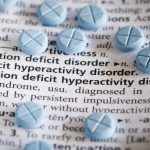
Folks who like to stay up late are nearly 50% more likely to develop type 2 diabetes than those who go to bed earlier, a new study finds. However, it’s not just because they have an unhealthy lifestyle, according to findings presented Sunday at the annual meeting of the European Association for the Study of Diabetes in Madrid. An increased risk of type 2 diabetes among night owls remained even after researchers accounted for other unhealthy lifestyle factors like poor diet, lack of exercise, drinking, smoking and poor sleep, researchers said. “A likely explanation is that the circadian rhythm or body clock in late chronotypes is out of sync with the work and social schedules followed by society,” said lead investigator Jeroen van der Velde, a postdoctoral researcher with Leiden University Medical Center in the Netherlands. “This can lead to circadian misalignment, which we know can lead to metabolic disturbances and ultimately type 2 diabetes.” For the study, researchers analyzed health data on more than 5,000 people participating in an ongoing study on the influence of body fat on disease. The data included typical bed and waking times for each person, as well as lifestyle factors that could increase a person’s risk of diabetes, researchers said. “Previous studies have indicated that a late chronotype — preferring to go to bed late and wake up later… read on > read on >














-150x150.jpg)









-300x200.jpg)













